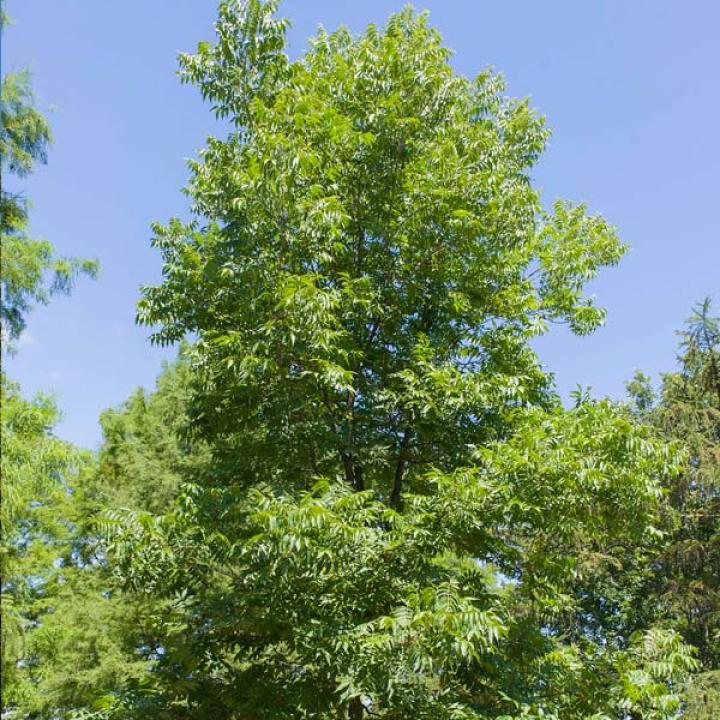
Hardy pecan (Carya illinoinensis)
Hardy pecan (Carya illinoinensis) is a large deciduous lowland tree, the largest of the hickories. It typically grows 75–100 feet (infrequently to 150 feet) tall with a large rounded spreading crown. Trunks mature to 2–4 feet in diameter. Pecan features medium green odd-pinnate compound leaves, with each leaf having 9–17 pointed leaflets. Leaflets range from 2 to 7 inches long. Leaves mature to yellow green in summer, eventually turning yellow brown in fall. Non-showy, monoecious greenish yellow flowers appear in April-May, the male flowers in pendulous catkins (to 4 inches long) and the female flowers in short spikes. Female flowers give way to sweet, edible nuts. Each nut is encased in a thin husk that splits open in four sections when ripe in fall. Pecans are an important commercial nut crop in the United States. Pecans are sometimes grafted onto the roots of other hickories (e.g., Carya cordiformis) so that they can be planted further north of their normal growing range. No serious insect or disease problems. Scab can infect both nuts and foliage, although scab-resistant cultivars are available. Aphids, pecan weevils, twig girdlers, and fall webworms can also do damage. As a landscape plant it matures to a large, stately tree with beautiful yellow fall color. Pecans are best grown in deep moist soil similar to conditions in their natural habitat of river basins.
Illinois native species.



